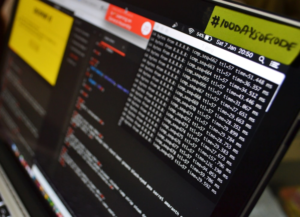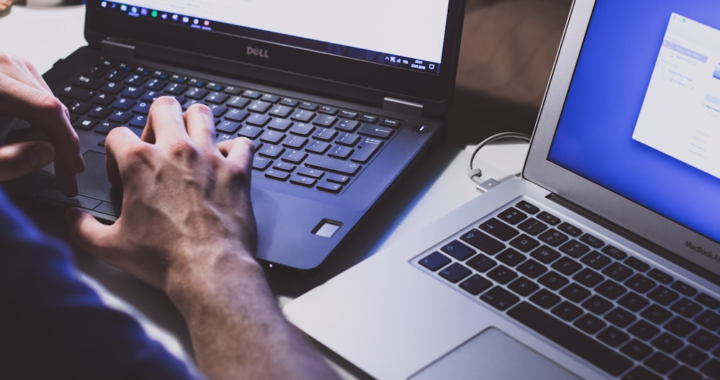In times when digital videos flood our screens, discerning truth from fiction has become increasingly challenging. From surveillance footage to viral clips circulating social media, videos hold immense potential for revealing and obscuring reality.
This is where video forensic services emerge as a vital tool in deciphering the truth. Through advanced digital techniques and technologies, forensic experts explore digital footage, enhancing clarity and debunking manipulated content.
This blog outlines everything you need to know about forensic video analysis, uncovering how it reveals critical insights hidden within digital videos.
1. The Power of Enhanced Clarity
Forensic video analysis begins with the quest for clarity. Often, surveillance footage or amateur videos may be grainy, pixelated, or poorly lit, obscuring crucial details. Through a combination of software algorithms and manual techniques, forensic analysts enhance the clarity of these videos, bringing obscured elements into focus.
Advanced tools can sharpen images, adjust contrast, and even reconstruct fragmented footage. This process aids in identifying individuals or objects within the video and helps establish a clearer narrative of events crucial in legal proceedings or investigative journalism.
2. Spotting Digital Manipulation
With the advent of sophisticated digital manipulation, discerning authentic videos from deepfakes or edited content is paramount. Forensic video analysis employs a range of techniques to identify signs of manipulation. These include analyzing metadata, examining compression artifacts, and scrutinizing inconsistencies in lighting or perspective.
Meticulously dissecting every frame helps forensic experts uncover traces of tampering, such as unnatural movements or discrepancies in shadows. Through this meticulous process, they expose the subtle digital fingerprints left behind by manipulators, safeguarding the integrity of visual evidence.

3. Timeline Reconstruction
In criminal investigations or accident reconstruction, establishing a precise timeline of events is essential. Forensic video analysis enables experts to reconstruct timelines by synchronizing multiple video sources or correlating visual evidence with other forms of documentation. This process involves meticulously analyzing timestamps, frame rates, and spatial relationships within the footage.
Aligning disparate pieces of video evidence allows forensic analysts to create a cohesive narrative, shedding light on the sequence of events leading up to a critical incident. This reconstruction aids in understanding complex scenarios and serves as compelling evidence in legal proceedings.
4. Speech and Audio Analysis
Beyond visual elements, forensic video analysis extends to the realm of audio. In cases where speech or ambient sounds play a crucial role, forensic experts employ specialized tools to enhance and analyze audio recordings. This includes isolating voices, reducing background noise, and identifying anomalies such as overdubbing or voice manipulation.
Analysts can determine the authenticity of audio content and extract valuable information, such as identifying speakers or discerning dialogue obscured by ambient noise by scrutinizing linguistic patterns and acoustic signatures. This interdisciplinary approach combines visual and auditory analysis to paint a comprehensive picture of events captured on video.
5. Geospatial Mapping
In cases involving outdoor scenes or large-scale events, geospatial mapping becomes a powerful tool in forensic video analysis. Leveraging GPS data, satellite imagery, and photogrammetry techniques allows analysts to map the spatial context of video footage with remarkable precision.
This allows for reconstructing complex environments and tracking the movement of objects or individuals within a scene. Geospatial mapping also enables analysts to correlate visual evidence with geographical landmarks or satellite imagery, providing valuable context for investigative purposes.
Whether reconstructing traffic accidents or documenting different types of environmental crimes, this spatial analysis enhances the forensic examination of digital videos.

6. Behavioral Analysis and Forensic Profiling
In addition to visual and audio cues, forensic video analysis delves into behavioral patterns in digital footage. Analysts study body language, facial expressions, and movement dynamics to gain insights into the intentions and motivations of individuals captured on video.
This behavioral analysis, combined with principles of forensic psychology and profiling, enables experts to build comprehensive profiles of subjects, aiding in criminal investigations and security assessments. Decoding subtle behavioral signals allows forensic video analysis to offer a deeper understanding of human interactions and intentions, enriching the investigative process.
7. Authentication and Chain of Custody
Ensuring the authenticity and integrity of digital evidence is paramount in forensic video analysis. Analysts meticulously document the chain of custody, establishing a clear trail of how the video evidence was obtained, stored, and analyzed.
Authentication techniques, such as cryptographic hashing and digital signatures, help verify the originality and unaltered nature of video files. Additionally, metadata analysis and forensic watermarking techniques provide further layers of authentication, safeguarding against tampering or manipulation.
Upholding strict protocols for evidence handling and authentication allows forensic video analysis to maintain the credibility and admissibility of visual evidence in legal proceedings.
8. Ethical Considerations and Privacy Protection
As forensic video analysis becomes increasingly sophisticated, ethical considerations surrounding privacy and consent come to the forefront. Analysts must navigate complex legal and ethical frameworks governing the collection and use of video evidence. Strict adherence to privacy regulations is essential in protecting the rights of individuals captured on video.
Additionally, ethical guidelines dictate the responsible use of facial recognition technology, surveillance cameras, and other intrusive methods in forensic analysis. Balancing the pursuit of truth with respect for individual privacy rights remains a cornerstone of ethical practice in forensic video analysis, ensuring that justice prevails without compromising fundamental freedoms.

9. Forensic Video Enhancement Techniques
A variety of enhancement techniques help extract crucial details from digital footage within forensic video analysis. These techniques include frame averaging, deblurring algorithms, and image stabilization methods, among others.
Frame averaging involves combining multiple frames to reduce noise and enhance clarity, which is particularly useful in low-light or high-motion scenarios. Deblurring algorithms can restore sharpness to blurry images, uncovering details that were previously obscured.
Image stabilization compensates for camera movement, resulting in smoother and more coherent footage. Employing these enhancement techniques helps forensic analysts unlock hidden details within digital videos, providing valuable insights for investigative purposes.
10. Cross-Disciplinary Collaboration in Forensic Analysis
Forensic video analysis often intersects with various other disciplines, necessitating cross-disciplinary collaboration to achieve comprehensive results. Collaboration with forensic audio experts enables simultaneous analysis of visual and auditory evidence, providing a more holistic understanding of events captured on video.
Similarly, partnerships with forensic linguists and handwriting experts can shed light on textual elements within video content, such as handwritten notes or subtitles. Furthermore, collaboration with law enforcement agencies, legal professionals, and academic researchers fosters innovation and knowledge exchange within the field.
Embracing cross-disciplinary collaboration allows forensic video analysis to enhance its capabilities and effectiveness in uncovering critical insights.
11. Forensic Video Analysis in the Digital Age
In an increasingly digital world, forensic video analysis evolves to meet the demands of emerging technologies and changing societal trends. The proliferation of smartphones, surveillance cameras, and social media platforms has led to a vast influx of digital video content, presenting opportunities and challenges for forensic analysts.
As video resolution and storage capacities continue to improve, analysts must adapt their techniques to handle large volumes of high-definition footage efficiently. Moreover, the prevalence of encryption and anonymization technologies poses new hurdles in accessing and analyzing video evidence.
Despite these challenges, advancements in artificial intelligence, machine learning, and computer vision offer unprecedented capabilities for automated analysis and pattern recognition in digital videos.
Harnessing the power of technology and innovation allows forensic video analysis to remain at the forefront of unraveling truths hidden within the digital landscape, ensuring justice and accountability in an ever-evolving digital age.

12. Emerging Technologies and Future Trends
As technology continues to evolve, so too does the field of forensic video analysis. Emerging technologies such as artificial intelligence and machine learning are revolutionizing the way analysts extract insights from digital footage. AI algorithms can automate tasks such as facial recognition, object tracking, and anomaly detection, augmenting the capabilities of forensic experts.
Furthermore, advancements in virtual reality and augmented reality are reshaping how visual evidence is presented in courtrooms, offering immersive experiences that enhance juror comprehension.
As we look to the future, interdisciplinary collaboration and innovation will drive further advancements in forensic video analysis, ensuring that the truth remains within reach in an increasingly digital world.
Unlock the Truth with Eclipse Forensics
Ready to uncover the truth hidden within digital videos? Partner with Eclipse Forensics as we excel in the field of video forensic services. Our team of video forensic experts utilizes cutting-edge techniques and technologies to enhance clarity, spot manipulation, and reconstruct timelines with precision.
Whether you’re navigating a legal dispute, conducting an investigation, or safeguarding your organization’s integrity, Eclipse Forensics is here to assist you.
Contact our forensic video analysis experts today to learn more about our services and how we can help you unveil critical insights concealed within digital footage.

